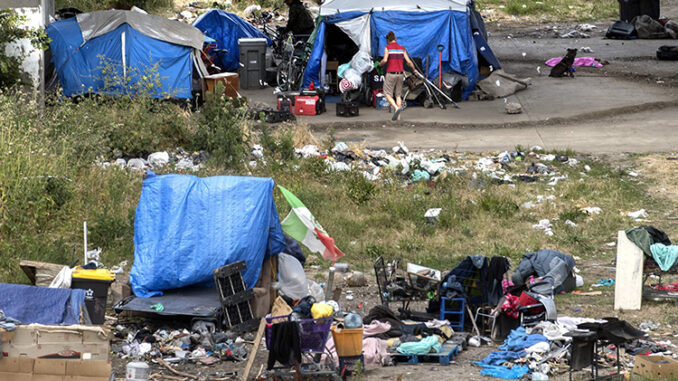
By Bob Highfill
California will ease restrictions brought on by the COVID-19 pandemic on June 15.
The novel coronavirus that causes the highly contagious respiratory disease responsible for tens of thousands to die statewide is loosening its crippling grip on the state’s economy. Much work remains to be done to climb out of the hole dug by the most destructive pandemic in generations.
But moving forward, some officials are shifting focus to a problem that existed long before the pandemic and that likely will linger long after the pandemic – homelessness. The 2019 Point-in-Time Homeless Count documented 1,558 people living on the streets in San Joaquin County, nearly triple the count in 2017. In 2019, there also were 1,061 people living in emergency shelters, according to Ready to Work. Put 20 people in a room and you’ll get more than 20 opinions on what must be done to solve an issue that has cost Californians $13 billion over the last three years, according to the Associated Press.
San Joaquin County Supervisor Tom Patti admitted he doesn’t have the answer to the homeless crisis, nor do any of his colleagues or any single person in the world. But Patti senses a shift in priorities among federal, statewide, county, city and other leaders who are working to bring more people off the street. Efforts enacted some 10 years ago have not worked, Patti said. The emphasis has rested on providing housing first. Patti said he’s not against that effort, but locally, “We’ve spent tens of millions to help dozens of people.”
Patti said the tragedy is those who are most in need, those who are living in squaller and despair, are overlooked when it comes to the housing-first approach because there are different types of housing.
Patti said the focus needs to be on housing those in the unsheltered world, people living along the waterways, roadways and on public and private land. Are they ready for housing? “No,” Patti said. “But what they are ready for is sheltering. They’re ready for transitional programs.”
Such as support services, behavioral health programs and treatment, alcohol, and substance abuse treatment. Patti said a high percentage of homeless need treatment.
“You put them in an apartment without fixing the hemorrhage, you’re not fixing anything,” Patti said.
Patti believes a shelter approach, with navigation services, in partnership with faith-based organizations, volunteer services, people who are interested in helping those living in despair, would work better. And he said others agree, including U.S. Senator Diane Feinstein.
“We’re looking at motel conversions, low-barrier shelters to bring several hundred people to a location, up to 500, 600, 700, maybe 800 people,” said Patti, who spoke about the volume of homeless in need of shelter with Dennis Buettner, Homeless Outreach Worker, San Joaquin County Behavioral Health. “That’s what you’re going to need to get shelter for.”
That’s what Patti is looking to do in partnership with state, county, and city officials – a course of action to help those most in need.
Patti said a one-page worksheet adopting the Continuum of Care’s plan and endorsed by cities within San Joaquin County has been developed through a partnership that includes Stockton Mayor Kevin Lincoln, Stockton Vice Mayor Christina Fugazi, San Joaquin County Supervisor Miguel Villapudua, and members of the Continuum of Care and United Way of San Joaquin.
The vision is a campus approach where each individual would be assessed and connected with services that best meet their needs at that moment. Finding a location for such a campus will be a challenge. Building from the ground up would be expensive. At this stage, funding isn’t fully secured. Patti said the federal government is considering allocating monies for exactly what is being talked about right now.
The first phase might be a bridge shelter, perhaps across from St. Mary’s Dining Room, that would buy time to build partnerships and work out the kinks. Several million dollars from a combination of San Joaquin County general funds, state and federal sources would be used to support the effort. The most expensive tack would be building from the ground up.
Patti said everyone recognizes, including Feinstein, that the housing-first model has come up short in addressing the issue; the state and feds are looking for a one-stop shop, he said.
“If we can use this as one of their model programs, then not only is the county and the city doing their job,” said Patti, “but we are fulfilling the interest from our Senator and the narrative that is being recognized in Washington.”



Be the first to comment